

Monday, August 23, 2021
Peter Kedron, Arizona State University and Joseph Holler, Middlebury College
Our understanding of COVID-19 remains in constant flux because the SAR-CoV-2 virus responsible for the disease has impacted the human population for only a short time. Facing this novel threat, scientists have produced a deluge of research which medical professionals, government officials, and policy makers are using to continually revise their response to the pandemic. To make the best possible decisions, we must know more than the results of recent COVID-19 research. We must also be able to assess the credibility of those results in order to weight findings when making decisions about pandemic response. Typically, the credibility of research is established by conducting independent reproductions and replications. However, the novelty and widespread impacts of COVID-19 have limited the opportunity to use reproductions and replications to assess what we think we know.
Our work uses reproductions of geographic research on COVID-19 to directly assess the reliability of that work. In collaboration with students at ASU and Middlebury College, we reproduced/replicated six geospatial analyses of COVID-19. Those reproductions include the work of geospatial fellows. We also developed related infrastructure for those wishing to conduct their own reproduction independently, or using CyberGISX. We hope that demonstrating that findings are reproducible will increase the likelihood of this research improving pandemic response and broadly impacting society.
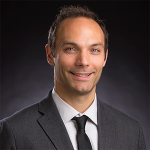 Dr. Peter Kedron is an Associate Professor in the School of Geographical Sciences and Urban Planning and a core faculty member of the Spatial Analysis Research Center at Arizona State University. His research focuses on understanding how interacting processes create persistently uneven spatial patterns, developing new methods of spatial analysis, and using those methods to address economic, social, and environmental problems. His most recent work examines reproducibility and replicability in the geographical sciences.
Dr. Peter Kedron is an Associate Professor in the School of Geographical Sciences and Urban Planning and a core faculty member of the Spatial Analysis Research Center at Arizona State University. His research focuses on understanding how interacting processes create persistently uneven spatial patterns, developing new methods of spatial analysis, and using those methods to address economic, social, and environmental problems. His most recent work examines reproducibility and replicability in the geographical sciences.
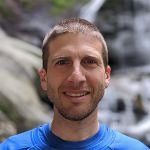 Dr. Joseph Holler is an assistant professor of geography at Middlebury College. He earned his PhD in the geography and GIScience IGERT program at the University at Buffalo. His research focuses empirically on social vulnerability and adaptation to hazards and climate change and methodologically on modelling social vulnerability and processes of planning and implementing adaptation at individual and national scales. Most recently, he has been replicating and reproducing geographic models of social vulnerability and attempting to validate them with new indicators of harm derived from surveys or from new sources of volunteered or crowd-sourced geographic information (e.g. Twitter or OpenStreetMap).
Dr. Joseph Holler is an assistant professor of geography at Middlebury College. He earned his PhD in the geography and GIScience IGERT program at the University at Buffalo. His research focuses empirically on social vulnerability and adaptation to hazards and climate change and methodologically on modelling social vulnerability and processes of planning and implementing adaptation at individual and national scales. Most recently, he has been replicating and reproducing geographic models of social vulnerability and attempting to validate them with new indicators of harm derived from surveys or from new sources of volunteered or crowd-sourced geographic information (e.g. Twitter or OpenStreetMap).
Shaowen Wang, University of Illinois Urbana-Champaign
 Dr. Shaowen Wang is a Professor and Head of the Department of Geography and Geographic Information Science; Richard and Margaret Romano Professorial Scholar; and an Affiliate Professor of the Department of Computer Science, Department of Urban and Regional Planning, and School of Information Sciences at the University of Illinois at Urbana-Champaign (UIUC). He has served as Founding Director of the CyberGIS Center for Advanced Digital and Spatial Studies at UIUC since 2013. He served as Associate Director of the National Center for Supercomputing Applications (NCSA) for CyberGIS from 2010 to 2017 and Lead of NCSA’s Earth and Environment Theme from 2014 to 2017. His research has been actively supported by a number of U.S. government agencies (e.g., CDC, DOE, EPA, NASA, NIH, NSF, USDA, and USGS) and industry. He has served as the principal investigator of several multi-institution projects sponsored by the National Science Foundation (NSF) for establishing the interdisciplinary field of cyberGIS and advancing related scientific problem solving in various domains (e.g., agriculture, bioenergy, emergency management, geography and spatial sciences, geosciences, and public health).
Dr. Shaowen Wang is a Professor and Head of the Department of Geography and Geographic Information Science; Richard and Margaret Romano Professorial Scholar; and an Affiliate Professor of the Department of Computer Science, Department of Urban and Regional Planning, and School of Information Sciences at the University of Illinois at Urbana-Champaign (UIUC). He has served as Founding Director of the CyberGIS Center for Advanced Digital and Spatial Studies at UIUC since 2013. He served as Associate Director of the National Center for Supercomputing Applications (NCSA) for CyberGIS from 2010 to 2017 and Lead of NCSA’s Earth and Environment Theme from 2014 to 2017. His research has been actively supported by a number of U.S. government agencies (e.g., CDC, DOE, EPA, NASA, NIH, NSF, USDA, and USGS) and industry. He has served as the principal investigator of several multi-institution projects sponsored by the National Science Foundation (NSF) for establishing the interdisciplinary field of cyberGIS and advancing related scientific problem solving in various domains (e.g., agriculture, bioenergy, emergency management, geography and spatial sciences, geosciences, and public health).
Monday, August 9, 2021
Clio Andris, Georgia Tech
Susceptibility to infectious diseases such as COVID-19 depends on geographic transmission factors and the likelihood that the virus that causes the disease spreads to nearby places through travel. Although many studies have captured the decrease in the spreading of COVID-19 due to a reduction in travel and vaccination rates, we still know less about the types of geographic regions whose boundaries act as partitions between regions with large case rates and/or large case counts. To do this, we apply community-detection algorithms to large networks of mobility and social media to construct geographic regions that reflect natural human movement and social relationships at the county-level for the continental United States. We then compute COVID-19 case rates across adjacent counties and measure how often the frequency with which large rates occur across boundaries of these functional regions and across state boundaries.
We find that large COVID-19 case rates persist along the boundaries of regions constructed from geolocated Facebook friends and Twitter connections, rendering these as poor partitions. Existing state boundaries and regions constructed from migration networks perform slightly better. Regions constructed from GPS-trace (“trip”) networks and particularly commuter networks have the smallest rates of COVID-19 case rates along the boundaries indicating that these regions may reflect natural partitions that prevent COVID-19 spillover. These regions may be more effective than states for making policy decisions on opening areas for activity, implementing mask-wearing policies, and allocating resources for COVID-19 interventions.
 Clio Andris is an Assistant Professor in the School of City & Regional Planning and School of Interactive Computing at Georgia Tech. She studies social networks and geographical systems and directs the Friendly Cities Lab. The co-authors of this work are Caglar Koylu, Assistant Professor, Department of Geographical and Sustainability Sciences, University of Iowa, and Mason A. Porter, Professor, Department of Mathematics, UCLA.
Clio Andris is an Assistant Professor in the School of City & Regional Planning and School of Interactive Computing at Georgia Tech. She studies social networks and geographical systems and directs the Friendly Cities Lab. The co-authors of this work are Caglar Koylu, Assistant Professor, Department of Geographical and Sustainability Sciences, University of Iowa, and Mason A. Porter, Professor, Department of Mathematics, UCLA.
 Jean-Michel Guldmann is Professor Emeritus and Academy Professor of City and Regional Planning at the Knowlton School of Architecture (KSA), where he has taught from 1977 to 2012 and served as KSA Interim Director from 2005 to 2007. He has a Master’s in Industrial and Systems Engineering from the Ecole des Mines, Nancy, France, and a PhD in Urban and Regional Planning from the Technion-Israel Institute of Technology, Haifa, Israel. He has taught courses on optimization, decision analysis, population/economic forecasting, and energy and regional modeling at OSU, Capital Normal University in Beijing, and Gazi University in Ankara. He has supervised to successful completion the dissertations of 31 PhD students, including 6 students since his retirement in 2012. He has also hosted and mentored six Visiting Scholars from China and Turkey. His current research focuses on the analysis and modeling of the urban heat island and its mitigation, the role of green infrastructure in urban sustainability, air pollution from transportation and other sources, urban energy consumption, and land-use change dynamics. His research methodologies include spatial econometrics, simulation, and optimization, with, as input, big geospatial data (LiDAR, remote sensing, Census, cadaster). He has published a book entitled Industrial Location and Air Quality Control: A Planning Approach (John Wiley), 99 peer-reviewed journal articles, and 2 book chapters. He has been a member of the OSU Emeritus Academy since 2014.
Jean-Michel Guldmann is Professor Emeritus and Academy Professor of City and Regional Planning at the Knowlton School of Architecture (KSA), where he has taught from 1977 to 2012 and served as KSA Interim Director from 2005 to 2007. He has a Master’s in Industrial and Systems Engineering from the Ecole des Mines, Nancy, France, and a PhD in Urban and Regional Planning from the Technion-Israel Institute of Technology, Haifa, Israel. He has taught courses on optimization, decision analysis, population/economic forecasting, and energy and regional modeling at OSU, Capital Normal University in Beijing, and Gazi University in Ankara. He has supervised to successful completion the dissertations of 31 PhD students, including 6 students since his retirement in 2012. He has also hosted and mentored six Visiting Scholars from China and Turkey. His current research focuses on the analysis and modeling of the urban heat island and its mitigation, the role of green infrastructure in urban sustainability, air pollution from transportation and other sources, urban energy consumption, and land-use change dynamics. His research methodologies include spatial econometrics, simulation, and optimization, with, as input, big geospatial data (LiDAR, remote sensing, Census, cadaster). He has published a book entitled Industrial Location and Air Quality Control: A Planning Approach (John Wiley), 99 peer-reviewed journal articles, and 2 book chapters. He has been a member of the OSU Emeritus Academy since 2014.
Monday, July 26, 2021
Ruby Mendenhall, University of Illinois Urbana-Champaign
To show how 400+ years of racial trauma (since 1619) affect African Americans, we compare excess Black death rates in Chicago during the 1918 Influenza with COVID-19 death rates. We argue that former slaves and descendent of slaves migrated to Chicago during two Great Migrations and encountered the color line in the form of segregated housing, employment discrimination and lack of access to healthcare (Mendenhall 2010). We examine death rates from two pandemics over 100 years apart for lessons learned and not learned regarding race, space and inequality. Later, we will also examine variables associated with COVID-19 deaths in Black segregated communities.
 Ruby Mendenhall is a Professor of Sociology, African American Studies, Urban and Regional Planning, Gender and Women’s Studies and Social Work at the University of Illinois at Urbana-Champaign. She is an Associate Dean for Diversity and Democratization of Health Innovation at the Carle Illinois College of Medicine. Mendenhall’s research examines how living in racially segregated neighborhoods with high levels of violence affects Black mothers’ mental and physical health using surveys, interviews, crime statistics, police records, data from 911 calls, art, wearable sensors and genomic analysis. She is currently a Geospatial Software Institute Fellow.
Ruby Mendenhall is a Professor of Sociology, African American Studies, Urban and Regional Planning, Gender and Women’s Studies and Social Work at the University of Illinois at Urbana-Champaign. She is an Associate Dean for Diversity and Democratization of Health Innovation at the Carle Illinois College of Medicine. Mendenhall’s research examines how living in racially segregated neighborhoods with high levels of violence affects Black mothers’ mental and physical health using surveys, interviews, crime statistics, police records, data from 911 calls, art, wearable sensors and genomic analysis. She is currently a Geospatial Software Institute Fellow.
Andrew J. Greenlee, University of Illinois Urbana-Champaign
The unfolding COVID-19 pandemic has disrupted many areas of life. Impacts on housing markets have been particularly profound, especially for households already facing housing instability challenges. A patchwork of federal, state, and local eviction moratoria have been an important public health intervention. In this presentation, I describe an effort to model the effect of evictions on the spread of SARS-CoV-2 epidemics, with the goal of understanding how the virus transmits within and between households in a theoretical metropolitan area. In addition to exploring some of the results of this model which underscore the importance of eviction moratoria as a public health intervention, I reflect upon some of the challenges of informing local and national advocacy and policy debates with these findings, and point to the ways in which geospatial software and a CyberGIS approach may aid in translating basic science knowledge into evidence for policy and advocacy.
 Andrew J. Greenlee Ph.D. is an Associate Professor in the Department of Urban and Regional Planning at the University of Illinois at Urbana-Champaign. Dr. Greenlee’s research lies at the intersection of housing policy, poverty, and social equity within cities and regions. His current research examines neighborhood and metropolitan opportunity structures through residential mobility processes. Greenlee’s other ongoing research examines the influence of governance on spatial outcomes for public and subsidized housing participants, and the dynamics of neighborhood change driven by urban renewal processes and public housing transformation.
Andrew J. Greenlee Ph.D. is an Associate Professor in the Department of Urban and Regional Planning at the University of Illinois at Urbana-Champaign. Dr. Greenlee’s research lies at the intersection of housing policy, poverty, and social equity within cities and regions. His current research examines neighborhood and metropolitan opportunity structures through residential mobility processes. Greenlee’s other ongoing research examines the influence of governance on spatial outcomes for public and subsidized housing participants, and the dynamics of neighborhood change driven by urban renewal processes and public housing transformation.
Monday, July 12, 2021
Dan Goldberg and Jinwoo Park, Texas A&M University
As the spread of COVID-19 gets severe, many hospitals suffer the shortage of their Intensive Care Unit (ICU) beds capacity, and it deteriorates the sufficient access to health care facilities. However, the conventional approach of spatial accessibility measurement utilizes deterministic variables as its inputs (i.e., supply, demand, and mobility). It also assumes that full capacity of supply (e.g., all ICU beds are always available) and no interference of mobility (e.g., traffic congestion or unexpected delay), so that it may overestimate the accessibility to health care facilities. Given the accessibility and availability of ICU beds are closely related to the fatality rate of COVID-19, it is important to measure the reliability of spatial accessibility to ICU beds. To address the issue, our study incorporates the uncertainty of supply (i.e., availability of ICU beds) and time-variant mobility into spatial accessibility measurement. We populate the uncertainty in both data from their historical fluctuations and conduct a Monte-Carlo simulation to measure spatial accessibility from the stochastic perspective. As a result, the spatial accessibility to ICU beds substantially changes throughout the simulation due to the uncertainty in the inputs. Specifically, the robustness of accessibility is tied with the number of alternative supplies. Downtown, where numerous hospitals are located, demonstrates high accessibility with high reliability, whereas rural areas with scarce health care facilities have low and unreliable accessibility. In addition, our result reveals the disparity of the case-fatality ratio of COVID-19 could be attributed to whether locations have sufficient and reliable accessibility.
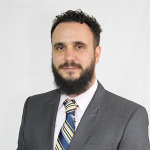 Dr. Daniel W. Goldberg is an Associate Professor of Geography and Computer Science & Engineering at Texas A&M University where he is also the Director of the TAMU Center for Geospatial Science, Applications & Technology (GeoSAT) and the TAMU GeoInnovation Service Center. Dr. Goldberg received his Ph.D. in Computer Science from the University of Southern California in 2010. His research encompasses a broad range of topics from spatial databases and geospatial health to geographic education to geocomputational approaches, most notably including geocoding techniques. He has served in geospatial leadership positions at the national level for UCGIS and USGIF and helps facilitate the largest GIS Day in the world, held annually at Texas A&M. In his free time, he likes digging in the dirt, being on or near the water, and snuggling his children while they are still young enough to allow it.
Dr. Daniel W. Goldberg is an Associate Professor of Geography and Computer Science & Engineering at Texas A&M University where he is also the Director of the TAMU Center for Geospatial Science, Applications & Technology (GeoSAT) and the TAMU GeoInnovation Service Center. Dr. Goldberg received his Ph.D. in Computer Science from the University of Southern California in 2010. His research encompasses a broad range of topics from spatial databases and geospatial health to geographic education to geocomputational approaches, most notably including geocoding techniques. He has served in geospatial leadership positions at the national level for UCGIS and USGIF and helps facilitate the largest GIS Day in the world, held annually at Texas A&M. In his free time, he likes digging in the dirt, being on or near the water, and snuggling his children while they are still young enough to allow it.
 Jinwoo Park is a Ph.D. candidate in the Department of Geography at Texas A&M University, under the supervision of Dr. Dan Goldberg. He holds a B.S. in Geography and an M.S. in Geography from Kyung Hee University in Seoul, South Korea. His research focuses on the temporal dynamics in spatial accessibility facilitated by the recent data-rich environment. Particularly, his dissertation aims the following three agendas to enhance the accuracy of the accessibility measurements and furnish policy implications, which is the fundamental of GIScience and System. The first agenda addresses the uncertainties in the measures of spatio-temporal accessibility, and it investigates the reliability of access. The second agenda is to furnish better policy implications by temporally synthesize voluminous spatio-temporal accessibility measurements. The third agenda is to systematically organize the temporal changes of accessibility at each location and explore what may explain the spatial inequality of access. Besides his study, he contributes his geospatial knowledge to society by mapping fiber optic cables at the campus of Texas A&M University for his assistantship.
Jinwoo Park is a Ph.D. candidate in the Department of Geography at Texas A&M University, under the supervision of Dr. Dan Goldberg. He holds a B.S. in Geography and an M.S. in Geography from Kyung Hee University in Seoul, South Korea. His research focuses on the temporal dynamics in spatial accessibility facilitated by the recent data-rich environment. Particularly, his dissertation aims the following three agendas to enhance the accuracy of the accessibility measurements and furnish policy implications, which is the fundamental of GIScience and System. The first agenda addresses the uncertainties in the measures of spatio-temporal accessibility, and it investigates the reliability of access. The second agenda is to furnish better policy implications by temporally synthesize voluminous spatio-temporal accessibility measurements. The third agenda is to systematically organize the temporal changes of accessibility at each location and explore what may explain the spatial inequality of access. Besides his study, he contributes his geospatial knowledge to society by mapping fiber optic cables at the campus of Texas A&M University for his assistantship.
Daniel Block, Chicago State University
Community Geography is an emerging subfield that utilizes geographic technologies and methodologies in support of building resilient, sustainable, and equitable communities. It is flexible, in that it can incorporate methodologies from Public Participatory GIS projects to citizen science to surveys and participatory history projects. The Chicago Food Systems Action Council (CFPAC) is a non-profit that works to build a more equitable, sustainable, and resilient food system in the Chicago area. Over the past three years, a group of scholars and practitioners from the Chicago area and the Midwest have come together to support research that aligns with CFPAC’s goals. This group, the Midwest Consortium for Equity, Research, and Food Justice (MCERF) helped organize an evaluation of the Good Food Purchasing Program, which pushes public agencies to purchase food from local, sustainable, and ethically raised sources with good labor practices, and was part of the CFPAC’s immediate response to food systems issues in the Chicago area caused by COVID and the measures put in place to control it. Many of these responses involved using mapping tools. This presentation will outline community geography in general, discuss CFPAC and MCERF COVID response, and then focus in particular on an effort to create a useful and frequently updated online map of supermarkets in Chicago with a downloadable dataset, as well as an effort to map food manufacturers in the Chicago foodshed.
 Dr. Daniel Block is a professor of geography at Chicago State University, a Predominately Black Institution (PBI) on Chicago’s South Side. He has a broad research agenda, much of which has been focused on community-university partnerships for food justice in Chicago. He is on the board of the Chicago Food Policy Council, as well as the steering committee of the Food Justice Scholar-Activist Activist-Scholar Network. He has completed many food access studies and is the author or co-author of several articles on the regulation of milk in the early twentieth century and the book Chicago: A Food Biography. He is a board member of the Chicago Food Policy Action Council, a fellow of the American Association of Geographers, and was the inaugural chair of the Geographies of Food and Agriculture Specialty Group.
Dr. Daniel Block is a professor of geography at Chicago State University, a Predominately Black Institution (PBI) on Chicago’s South Side. He has a broad research agenda, much of which has been focused on community-university partnerships for food justice in Chicago. He is on the board of the Chicago Food Policy Council, as well as the steering committee of the Food Justice Scholar-Activist Activist-Scholar Network. He has completed many food access studies and is the author or co-author of several articles on the regulation of milk in the early twentieth century and the book Chicago: A Food Biography. He is a board member of the Chicago Food Policy Action Council, a fellow of the American Association of Geographers, and was the inaugural chair of the Geographies of Food and Agriculture Specialty Group.
Monday, June 28, 2021
Ningchuan Xiao, The Ohio State University
The surge of human mobility data in the past two decades has led to much progress in research and applications that involve human locations and movements. The emergence of such data has also led to serious questions about their ethical underpinnings because they often lack transparency in data acquisition, processing, transfer, and use, and are often not reproducible. In this webinar, we examine the theoretical concerns of human mobility data and the algorithms behind their production and applications. We focus on transparency from a microethics perspective and discuss transparency issues in some major mobility big data sets. We then present a case study leveraging a new source of publicly available geospatial big data, the traffic camera feeds, to illustrate a transparent and ethical framework for mobility data production. By making the source data, models, algorithms, code, quality measures, derived data products, and expected consequences transparent and accessible to the public, we propose a promising framework to promote the openness, accountability, and trust in the lifecycle of mobility data.
 Dr. Ningchuan Xiao is Professor of Geography at The Ohio State University. His research in geographic information science and spatial analysis is founded on the premise that spatial and temporal data is ubiquitous, and the design and implementation of computational methods will not only enable us to efficiently produce and process such data but also help us understand the social and ethical nuances of such data. In this broad context, he directs his enthusiasm to continuously developing an extensive research, teaching, and service portfolio to embrace topics in mapping and data visualization, spatial optimization and spatial decision support systems, spatial and temporal modeling, and environmental modeling.
Dr. Ningchuan Xiao is Professor of Geography at The Ohio State University. His research in geographic information science and spatial analysis is founded on the premise that spatial and temporal data is ubiquitous, and the design and implementation of computational methods will not only enable us to efficiently produce and process such data but also help us understand the social and ethical nuances of such data. In this broad context, he directs his enthusiasm to continuously developing an extensive research, teaching, and service portfolio to embrace topics in mapping and data visualization, spatial optimization and spatial decision support systems, spatial and temporal modeling, and environmental modeling.
 As the Executive Director of the American Association of Geographers (AAG) from 2003-2019, Dr. Douglas Richardson led a highly successful renewal of the organization. He greatly expanded its membership and international footprint, developed dynamic and wide-ranging new research initiatives, and built strong academic, publishing, and financial foundations for the AAG, and for geography’s future. Prior to joining the AAG, Dr. Richardson founded and was the president of GeoResearch, Inc., a scientific research firm that developed and patented the world’s first real-time space-time interactive GPS/GIS functionality, which has transformed the ways in which geospatial data and geographic information is now collected, experienced, mapped, and used within geography and other disciplines, and in society at large. The concepts, technologies and innovations pioneered by Richardson and GeoResearch are now ubiquitous and at the heart of a wide array of real-time interactive mapping, navigation, mobile computing and consumer devices such as cell phones, and location-based business applications. They also have become central to the real-time management of day-to-day core operations of large-scale governmental entities, corporations, and international NGOs. Richardson sold his company and its core patents in 1998, and has since continued to develop the field of real-time space-time integration in geography and GIScience through international and interdisciplinary geospatial research in areas such as health, sustainable environmental and economic development, human rights, coupled human-natural systems, and more recently the integration of spatial concepts, data, and analysis in the humanities and social sciences.
As the Executive Director of the American Association of Geographers (AAG) from 2003-2019, Dr. Douglas Richardson led a highly successful renewal of the organization. He greatly expanded its membership and international footprint, developed dynamic and wide-ranging new research initiatives, and built strong academic, publishing, and financial foundations for the AAG, and for geography’s future. Prior to joining the AAG, Dr. Richardson founded and was the president of GeoResearch, Inc., a scientific research firm that developed and patented the world’s first real-time space-time interactive GPS/GIS functionality, which has transformed the ways in which geospatial data and geographic information is now collected, experienced, mapped, and used within geography and other disciplines, and in society at large. The concepts, technologies and innovations pioneered by Richardson and GeoResearch are now ubiquitous and at the heart of a wide array of real-time interactive mapping, navigation, mobile computing and consumer devices such as cell phones, and location-based business applications. They also have become central to the real-time management of day-to-day core operations of large-scale governmental entities, corporations, and international NGOs. Richardson sold his company and its core patents in 1998, and has since continued to develop the field of real-time space-time integration in geography and GIScience through international and interdisciplinary geospatial research in areas such as health, sustainable environmental and economic development, human rights, coupled human-natural systems, and more recently the integration of spatial concepts, data, and analysis in the humanities and social sciences.
Monday, June 14, 2021
Jayajit Chakraborty, The University of Texas at El Paso
Although people with disabilities (PwDs) are more likely to be adversely impacted by COVID-19 than non-disabled individuals and face additional challenges, research on the spatial distribution of COVID-19 burdens has paid limited attention to PwDs. My project addresses this gap by conducting a comprehensive national-scale study of the relationship between COVID-19 vulnerability and disability status, using several spatial analytic and statistical modeling techniques. The main research objectives are to: (1) examine whether PwDs and those with specific types of difficulties are significantly overrepresented in areas more vulnerable to the COVID-19 pandemic; and (2) determine whether socially disadvantaged PwDs (based on their race, ethnicity, age, sex, poverty, and employment status) are significantly overrepresented in areas more vulnerable to the COVID-19 pandemic. The project provides new insights on the association between COVID-19 vulnerability and disability characteristics, and builds a foundation for more detailed analyses of the disproportionate impacts of the pandemic on PwDs—a topic that has significant implications for health equity, social justice, and related public policies. The findings also emphasize the necessity to expand notions of vulnerability associated with COVID-19, and the urgent need for COVID-19 data collection systems to incorporate disability information. In addition, I am developing an interactive geospatial dashboard that will serve as an educational tool for understanding the spatial variability, diversity, and vulnerability of PwDs, as well as provide an online resource that can be used to identify, map, and plan support for socially vulnerable PwDs during public health emergencies and disaster events.
 Dr. Jayajit Chakraborty is a Professor of Geography in the Department of Sociology & Anthropology at the University of Texas at El Paso, and the Founding Director of the Socio-Environmental & Geospatial Analysis (SEGA) Lab which conducts multidisciplinary and community-engaged research on topics at the intersection of social and environmental sciences. He has a PhD in Geography and MS in Urban and Regional Planning, both from the University of Iowa. Dr. Chakraborty’s research activities encompass a wide range of environmental health and environmental justice issues, and he is particularly interested in applying GIScience and spatial statistical techniques for analyzing environmental and social injustices. His funded and published research has examined various hazards, risks, and disasters in multiple US urban areas, the US-Mexico border, Australia, and India. Dr. Chakraborty has authored more than 100 publications and recently coedited The Routledge Handbook of Environmental Justice. His research has been supported by grants from the US National Science Foundation (NSF), US Environmental Protection Agency (EPA), US Department of Transportation, US Department of Treasury, Australian Research Council, and many other agencies. Dr. Chakraborty has served on advisory committees and review panels for the EPA, NSF, National Institutes of Health, and National Academies of Sciences, Engineering, and Medicine.
Dr. Jayajit Chakraborty is a Professor of Geography in the Department of Sociology & Anthropology at the University of Texas at El Paso, and the Founding Director of the Socio-Environmental & Geospatial Analysis (SEGA) Lab which conducts multidisciplinary and community-engaged research on topics at the intersection of social and environmental sciences. He has a PhD in Geography and MS in Urban and Regional Planning, both from the University of Iowa. Dr. Chakraborty’s research activities encompass a wide range of environmental health and environmental justice issues, and he is particularly interested in applying GIScience and spatial statistical techniques for analyzing environmental and social injustices. His funded and published research has examined various hazards, risks, and disasters in multiple US urban areas, the US-Mexico border, Australia, and India. Dr. Chakraborty has authored more than 100 publications and recently coedited The Routledge Handbook of Environmental Justice. His research has been supported by grants from the US National Science Foundation (NSF), US Environmental Protection Agency (EPA), US Department of Transportation, US Department of Treasury, Australian Research Council, and many other agencies. Dr. Chakraborty has served on advisory committees and review panels for the EPA, NSF, National Institutes of Health, and National Academies of Sciences, Engineering, and Medicine.
Daoqin Tong, Arizona State University
The COVID-19 pandemic has fueled a range of devastating consequences to the U.S. economy. Soaring unemployment rates have pushed millions of families into food insecurity. Meanwhile, the social distancing requirement has also changed the way that people access food with many people replacing in-store visits with online food shopping and pickup. This study combines a large food access spatial dataset and relevant socioeconomic and demographic data to examine how economic stress and the new rules for obtaining food impact food access during COVID-19. We map food access patterns before and during COVID-19 and examine the factors associated with the food access pattern change. We examine such changes in several large metropolitan areas including Phoenix and Los Angeles. The study provides important insights into efforts aimed at enhancing food security and policies to help prepare for future shocks. Research findings concerning food access challenges of vulnerable population groups including low-income and minority will help food assistance programs, non-profit organizations and government agencies in these regions (and beyond) to plan food service provision and formulate effective interventions.
 Dr. Daoqin Tong is an Associate Professor in the School of Geographical Sciences and Urban Planning at Arizona State University. Her research interests include spatial data analysis, spatial optimization, and geographic information science to improve spatial decision-making. She developed models and solution algorithms to solve real-world problems spanning location analysis, food access, transportation, and public health. Recently, she has examined issues related to urban sustainability. She developed analytical approaches to examine the potential of sustainable urban agriculture through the integration of renewable water resources. She has also worked on the optimal placement and design of green infrastructures to mitigate the impacts of urban flooding. Another ongoing project explores how pollen can be used for tracking the movement of objects and people through space and time. Her work has been funded by multiple government agencies (e.g., NSF, DOD, and DOT) and local organizations.
Dr. Daoqin Tong is an Associate Professor in the School of Geographical Sciences and Urban Planning at Arizona State University. Her research interests include spatial data analysis, spatial optimization, and geographic information science to improve spatial decision-making. She developed models and solution algorithms to solve real-world problems spanning location analysis, food access, transportation, and public health. Recently, she has examined issues related to urban sustainability. She developed analytical approaches to examine the potential of sustainable urban agriculture through the integration of renewable water resources. She has also worked on the optimal placement and design of green infrastructures to mitigate the impacts of urban flooding. Another ongoing project explores how pollen can be used for tracking the movement of objects and people through space and time. Her work has been funded by multiple government agencies (e.g., NSF, DOD, and DOT) and local organizations.
Monday, May 24, 2021
Naomi Lazarus, California State University, Chico
 Dr. Naomi W. Lazarus is an Assistant Professor of Geosciences in the Department of Geography and Planning at California State University, Chico. Dr. Lazarus’ research examines the demographic, social, and economic impacts of natural and anthropogenic hazards. She incorporates spatial statistics and geographical information systems to assess vulnerability and risk associated with environmental hazards and disease epidemics. Her current research examines spatial and temporal trends in the dengue virus in South Asia. Dr. Lazarus is the coordinator of the geospatial technology certificate program in her department and is faculty advisor to GeoPlace, the student-run mapping lab at the university.
Dr. Naomi W. Lazarus is an Assistant Professor of Geosciences in the Department of Geography and Planning at California State University, Chico. Dr. Lazarus’ research examines the demographic, social, and economic impacts of natural and anthropogenic hazards. She incorporates spatial statistics and geographical information systems to assess vulnerability and risk associated with environmental hazards and disease epidemics. Her current research examines spatial and temporal trends in the dengue virus in South Asia. Dr. Lazarus is the coordinator of the geospatial technology certificate program in her department and is faculty advisor to GeoPlace, the student-run mapping lab at the university.
Kenan Li, University of Southern California
A growing number of initiatives seek to document health inequalities and to propose policies that would help to support those most in need. Our research team initiated a series of efforts to study how these inequalities evolved throughout the COVID-19 pandemic. Our work followed two threads. The first examined the demographic characteristics of those who succumbed to COVID-19 in California, which as of now is among the hardest hit states in terms of numbers of cases and deaths. The second examined spatiotemporal patterns of food insecurity in Los Angeles County throughout the COVID-19 pandemic using data from the Understanding America Study and datasets provided by Aunt Bertha and Yelp. Human mobility, which changed with the spread of COVID-19, is highly correlated with the variations in mortality and food insecurity. Although the high spatiotemporal granularity of location services supported by most smart devices provide us with great opportunities to delineate these relationships, we found complex spatiotemporal variations in the human mobility variables. We developed a framework to extract representative patterns of human mobility changes at local scales, and used the results to help identify some of the drivers for COVID-19 related deaths across California and food insecurity across Los Angeles County. The human mobility aspects of our work will be migrated to the CyberGISX platform in hopes others can adapt and use our methods to model the disproportionate impacts of events like the COVID-19 pandemic at fine spatiotemporal scales in more reproducible and transparent ways.
 Dr. Kenan Li is a research scientist in the Spatial Sciences Institute of University of Southern California. He achieved his Ph.D. degree at Louisiana State University, and his postdoctoral training at University of Southern California. His research interests focus on spatial computation and modeling of community resilience/sustainability, data science and statistics in environmental health, and geo-simulation of human and environmental systems. His works incorporate big data, deep learning, and GIS, and he seeks to develop geo-AI (artificial intelligence) frameworks, integrated geo-cyberinfrastructures, new approaches for analyzing integrated sensor data, and novel biostatistics algorithms. He has led various research projects funded by the National Science Foundation, U.S. Army Corps of Engineers and Defense Imagery Management Operations Center, Southern California Environmental Health Sciences Center, Los Angeles County, and Accenture plc. Most recently, he served as a committee member of the USC center for global chain management Covid-19 Healthcare Initiative Consortium.
Dr. Kenan Li is a research scientist in the Spatial Sciences Institute of University of Southern California. He achieved his Ph.D. degree at Louisiana State University, and his postdoctoral training at University of Southern California. His research interests focus on spatial computation and modeling of community resilience/sustainability, data science and statistics in environmental health, and geo-simulation of human and environmental systems. His works incorporate big data, deep learning, and GIS, and he seeks to develop geo-AI (artificial intelligence) frameworks, integrated geo-cyberinfrastructures, new approaches for analyzing integrated sensor data, and novel biostatistics algorithms. He has led various research projects funded by the National Science Foundation, U.S. Army Corps of Engineers and Defense Imagery Management Operations Center, Southern California Environmental Health Sciences Center, Los Angeles County, and Accenture plc. Most recently, he served as a committee member of the USC center for global chain management Covid-19 Healthcare Initiative Consortium.
Monday, May 10, 2021
Song Gao, University of Wisconsin-Madison
To contain the COVID-19 spread, one of the nonpharmaceutical interventions is physical (social) distancing. An interactive web-based mapping platform, which provides up-to-date mobility and close contact information using large-scale anonymized mobile phone location data in the US, was developed and maintained by the GeoDS Lab at UW-Madison. Using the multiscale human mobility origin-to-destination (OD) flow data, a novel mobility-augmented epidemic model was further developed to help analyze the COVID-19 spread dynamics at multiple geographical scales (e.g., state, county, and neighborhood), inform public health policy, and deepen our understanding of human behavior under the unprecedented public health crisis.

Dr. Song Gao is an Assistant Professor in Geographic Information Science at the University of Wisconsin-Madison, where he leads the GeoDS Lab. He holds a Ph.D. degree from the University of California Santa Barbara. His main research interests include Place-Based GIS, Human Mobility, and GeoAI for Social Sensing. He is the author of 50+ publications with 3500+ Google Scholar citations in prominent journals and conferences. He is the principal investigator of multiple research grants from NSF, Wisconsin Alumni Research Foundation, Microsoft, and geospatial industry partners. He currently serves as the Associate Editor of Annals of GIS, Editorial Board Member of Scientific Reports, PLOS ONE, Cartography and Geographic Information Science, the Academic Director of AAG Geographic Information Science and Systems Specialty Group, and the President-Elect of CPGIS. He was the recipient of the ‘Waldo Tobler Young Researcher Award in GIScience, among other awards.
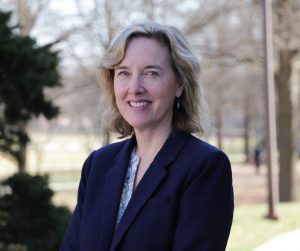 Dr. Kathleen Stewart is a Professor in the Department of Geographical Sciences and Director of the Center for Geospatial Information Science at the University of Maryland. She works in the area of geographic information science where she is interested in mobility and spatial access, often in a big geospatial data context and using approaches that lie in the expanding field of spatial data science. She investigates movement and mobility for a number of different application domains, for example, health, and transportation where movement patterns and geospatial dynamics are key topics. She is also interested in modeling geospatial semantics including geospatial ontologies and their role for location-based applications. She serves as a member of the Mapping Science Committee of the National Academies of Sciences, Engineering, and Medicine and is a member of the editorial board of The International Journal of Geographical Information Science, Transactions in GIS, Geographical Analysis, the Journal of Spatial Information Science, the International Journal of Geo-Information, and Geomatics.
Dr. Kathleen Stewart is a Professor in the Department of Geographical Sciences and Director of the Center for Geospatial Information Science at the University of Maryland. She works in the area of geographic information science where she is interested in mobility and spatial access, often in a big geospatial data context and using approaches that lie in the expanding field of spatial data science. She investigates movement and mobility for a number of different application domains, for example, health, and transportation where movement patterns and geospatial dynamics are key topics. She is also interested in modeling geospatial semantics including geospatial ontologies and their role for location-based applications. She serves as a member of the Mapping Science Committee of the National Academies of Sciences, Engineering, and Medicine and is a member of the editorial board of The International Journal of Geographical Information Science, Transactions in GIS, Geographical Analysis, the Journal of Spatial Information Science, the International Journal of Geo-Information, and Geomatics.
Monday, April 26, 2021
Xun Shi, Dartmouth College
Most current modeling works of COVID-19 are based on the classic SIR model, typically at the population level and adopting top-down strategies. They are sensitive to modeling setting and parameter values that feature subjectivity. Their aggregate data also mask variation across people and space. An alternative approach is to model at the individual level and to resort to a bottom-up strategy, which takes advantage of increasingly available big data of individuals’ mobilities and high-performance computing capabilities. It anticipates general and high-resolution spatiotemporal patterns of the epidemic to emerge from the modeling process. We have been developing a bottom-up approach to epidemic modeling for years. The components of the approach include 1) disaggregating available human mobility data to obtain individual-level trajectory data, using a Markov Chain Monte Carlo (MCMC) process; 2) tracing contacts among individuals based on their daily activity trajectories; 3) building an Epidemic Forest model that represents transmission relationships among actual disease cases; and 4) predicting future epidemics based on the epidemic characteristics derived from the Epidemic Forest model, as well as data depicting intervention scenarios through agent-based modeling. The process has been preliminarily implemented within an ArcGIS environment and is being migrated to the CyberGISX platform. It has been applied to case studies of COVID-19 in China.

Xun Shi is a Professor of Geography at Dartmouth College. He has been highly active in the area of health-related geospatial research. His research covers disease mapping, disease-environment association detection, communicable disease modeling, healthcare accessibility assessment, and data infrastructure for health-GIS. He received funding support from NIH, NSF, CDC, and other sources. He published more than 70 research papers in international journals and developed ArcHealth, a software package serving spatial analytical functions particularly requested by health-related studies and practices. He served as the Chair of the Health and Medical Geography Specialty Group of the American Association of Geographers (AAG) during 2015-2016, and as an editor of AAG Annals during 2008-2018.

Sara L. McLafferty is a Professor at University of Illinois Urbana-Champaign. Her current research investigates place-based inequalities in health and well-being and access to health services for women, immigrants, and racial/ethnic minorities in the United States. Her ongoing work examines the impacts of increasing economic inequality and residential segregation on women's commuting times and modes and on maternal and infant health outcomes. She also uses and develops GIS and spatial analysis methods for examining health and social issues in cities and planning public health interventions. She is currently an Associate Editor of Health and Place and serves on the editorial boards of Geographical Analysis, and Spatial and Spatiotemporal Epidemiology.
Mon, March 15, 2021, 4:00 - 5:00 pm U.S. Central Time
Gary Langham Welcome Remarks
Shaowen Wang Geospatial Fellows Introduction
Xiang Chen Presentation
Mike Goodchild Discussant
Webinar details and registration: https://aag-geospatialfellows-series.secure-platform.com/a/solicitations/16/sessiongallery/245
Abstract: The ongoing COVID-19 pandemic has put the US and the world into an extremely difficult situation. Complex and massive geospatial data has been rapidly collected for the fight against the COVID-19 grand challenge across the globe. Harnessing such geospatial data requires developing and integrating cutting-edge geospatial software capabilities, building interdisciplinary and transdisciplinary collaborations, and ensuring that research findings are readily accessible and reproducible. The National Science Foundation (NSF) has funded a project to conceptualize a Geospatial Software Institute (GSI; https://gsi.cgwebdev.cigi.illinois.edu/) for establishing a long-term hub of excellence in geospatial software infrastructure that can serve diverse research and education communities. The GSI conceptualization project has selected sixteen Geospatial Fellows to collaboratively advance COVID-19 research and education through reproducible geospatial science. This webinar series will feature the work of the Geospatial Fellows focused on the following four themes: (1) making geospatial research computationally reproducible; (2) developing novel geospatial analysis and modeling capabilities; (3) assessing health disparities; and (4) understanding COVID-19 impacts. This talk will briefly introduce the GSI conceptualization project and the Geospatial Fellows program for launching the webinar series.

Shaowen Wang is a Professor and Head of the Department of Geography and Geographic Information Science; Richard and Margaret Romano Professorial Scholar; and an Affiliate Professor of the Department of Computer Science, Department of Urban and Regional Planning, and School of Information Sciences at the University of Illinois at Urbana-Champaign (UIUC). He has served as Founding Director of the CyberGIS Center for Advanced Digital and Spatial Studies at UIUC since 2013. He served as Associate Director of the National Center for Supercomputing Applications (NCSA) for CyberGIS from 2010 to 2017 and Lead of NCSA’s Earth and Environment Theme from 2014 to 2017. His research has been actively supported by a number of U.S. government agencies (e.g., CDC, DOE, EPA, NASA, NIH, NSF, USDA, and USGS) and industry. He has served as the principal investigator of several multi-institution projects sponsored by the National Science Foundation (NSF) for establishing the interdisciplinary field of cyberGIS and advancing related scientific problem solving in various domains (e.g., agriculture, bioenergy, emergency management, geography and spatial sciences, geosciences, and public health).
Abstract: In the early development of COVID-19, large-scale preventive measures, such as border control and air travel restrictions, were implemented to slow international and domestic transmissions. When these measures were in full effect, new cases of infection would be primarily induced by community spread, such as human interactions within and between neighboring cities and towns, which is generally known as the meso-scale. Existing studies of COVID-19 using mathematical models are unable to accommodate the need for meso-scale modeling, because of the unavailability of COVID-19 data at this scale and the different timings of local intervention policies. In this respect, we propose a meso-scale mathematical model of COVID-19, named the meso-scale Susceptible, Exposed, Infectious, Recovered (MSEIR) model, using town-level infection data in the state of Connecticut. We consider the spatial interaction in terms of the inter-town travel in the model. Based on the developed model, we evaluated how different strengths of social distancing policy enforcement may impact future epidemic curves based on two evaluative metrics: compliance and containment. The developed model and the simulation results have contributed to community-level assessment and better preparedness for COVID-19.
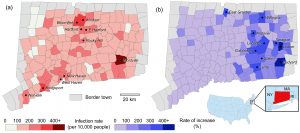

Xiang Chen is an Assistant Professor in the Department of Geography at the University of Connecticut, USA. He earned a Ph.D. in geography at The Ohio State University. His research interests are focused on GIScience and community health (e.g., obesity, COVID-19, and dengue fever). He employs GIS approaches (e.g., big data analytics, geovisualization, deep learning) and accessibility theories to unveil the socioeconomic and health inequalities within urban communities.
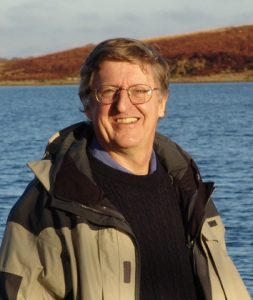
Michael F. Goodchild is Emeritus Professor of Geography at the University of California, Santa Barbara, where he also holds the title of Research Professor. He is also Distinguished Chair Professor at the Hong Kong Polytechnic University and Research Professor at Arizona State University, and holds many other affiliate, adjunct, and honorary positions at universities around the world. Until his retirement in June 2012 he was Jack and Laura Dangermond Professor of Geography, and Director of UCSB’s Center for Spatial Studies. He received his BA degree from Cambridge University in Physics in 1965 and his PhD in geography from McMaster University in 1969, and has received five honorary doctorates. He was elected member of the National Academy of Sciences and Foreign Member of the Royal Society of Canada in 2002, member of the American Academy of Arts and Sciences in 2006, and Foreign Member of the Royal Society and Corresponding Fellow of the British Academy in 2010; and in 2007 he received the Prix Vautrin Lud. He was editor of Geographical Analysis between 1987 and 1990 and editor of the Methods, Models, and Geographic Information Sciences section of the Annals of the Association of American Geographers from 2000 to 2006. He serves on the editorial boards of ten other journals and book series, and has published over 15 books and 500 articles. He was Chair of the National Research Council’s Mapping Science Committee from 1997 to 1999, and of the Advisory Committee on Social, Behavioral, and Economic Sciences of the National Science Foundation from 2008 to 2010. His research interests center on geographic information science, spatial analysis, and uncertainty in geographic data.